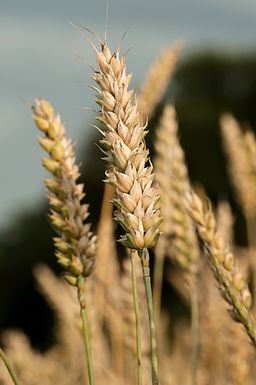 By: Marlene Merritt, DOM, LAc, ACN
By: Marlene Merritt, DOM, LAc, ACN
ToYourHealth.com
You probably have heard the grumbling from some people, saying how could gluten intolerance be real, we’ve eaten wheat since biblical times and that this is all in people’s heads. You see whole sections of supermarkets devoted to eating gluten-free, and restaurants trying to keep up with separate menus and options. So what’s the real story on this?
Let’s straighten out a few things first, just so we’re all clear. A gluten allergy is different from an intolerance, even though people will use the terms interchangeably. They’re not the same thing. An allergy is an IgE immune response of the body, and you’ve seen IgE responses before, ranging from hives, asthma, itchiness, to tightening of the throat and anaphylactic reactions.
The word “intolerance” refers to a different part of the immune reaction, and it can often be hours or days before the reaction occurs. And when it occurs, it can be so unrecognizable that associating it with a food might never happen. And this is the challenge of gluten intolerance.
Despite the thought that gluten intolerance is a “new” problem, it was actually recognized back in the ancient Greek days, where Areatus of Cappadocia in 100 A.D. spoke of a condition called “Coeliac Affliction” with many of the symptoms we see today (and it’s from where we get the name). Dr. Willem Dicke noticed during WWII that when rationing removed wheat, barley and rye from people’s diets, the incidence of childhood diarrhea he was treating diminished dramatically, and when rationing was lifted, it returned.
So what’s gluten? It’s the “glue” that makes dough easy to work with — corn bread, which doesn’t have gluten, tends to crumble, but dough that has gluten is stretchy and rises well. Wheat (and rye, barley, spelt and kamut) contains gluten, which is made up of two proteins that have been shown to cause reactions in people: gliadin and glutinen.
One of the reasons we now have this modern problem of gluten intolerance is because the wheat we eat now is wildly different that the wheat from biblical times. That was Einkorn wheat and if you ever see pictures of it, it’s barely recognizable as the wheat we know. The wheat that we have (the third largest crop behind corn and soy) is called Dwarf wheat, and it has been genetically bred to contain four times more gluten than it had 50 years ago. It actually has twice as many chromosomes as the traditional Einkorn wheat and those new chromosomes are coded for different gluten (and more irritating gluten) than that Einkorn wheat — hello, GMO! So between the huge concentration of gluten in wheat, the new-to-us gluten proteins and the huge carbohydrate overload of the typical diet, we’ve introduced this irritating protein in such overwhelming amounts our body almost cannot NOT react.






